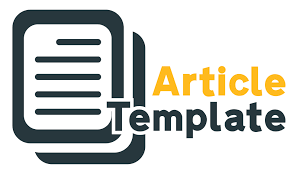Bentuk Penyajian Gendang Beleq Guntur Tlu Desa Songak Kecamatan Sakra Lombok Timur NTB
DOI:
https://doi.org/10.29408/tmmt.v2i1.1632Keywords:
performance, Gendang Beleq Gutur TluAbstract
This study aims to describe the form of serving Gendang Beleq Guntur Tlu Songak village, Sakra Lotim district, NTB. The approach used in this research is descriptive qualitative. The object in this study is Gendang Beleq Guntur Tluwhich includes the performance. The subjects in this study were supporters of Gendang Beleq Guntur Tlu itself. The study focused on the form of gendang beleq gutur tlu. Data collection by observation, interviews and documentation. Data is done bydata reduction, data presentation, conclusion. To check the validity of the data, the data validity technique is used by triangulation technique. From the results of the study, it has been found about: (1) The form of the presentation Gendang Beleq Guntur Tlu is a form of dance orchestra music using various traditional musical instruments and covers Gendang Beleq Guntur Tlu itself, performance, performance procedures, floor pattern, dance, place of show, cosmetology, fashion, and music; (2) musical instruments used by gendang beleq, petuk, cemprang / ceng-ceng, reong, gong, oncer.
References
Andjani, Karina. (2014). Apa Itu Musik ?. Tangerang: CV Marjin kiri.
Arikunto, Suharsimi. (2010) Manajemen Penelitian. Jakarta: PT Rineka Cipta.
Miller H. M. (2017). Apresiasi Musik ( terjemahan oleh Triyono Bramantyo). Yogyakarta : Thafa Media.
Hafiz, Alwan. (2016) Kesenian Gendang Beleq Lombok Serta Fungsi Dan Maknanya. Denpasar: Program Pacasarjana Institute Seni Indonesia Denpasar.
Minarti, Helly, Tajudin Ahmad Yudi dan Gesuri Ika dian. (2015). Rencana
Pengembangan Seni Pertunjukan Nasional 2015-2019. Jakarta: PT Republik Solusi.
Mudjilah, Hanna Sri. (2010) Teori Musik 2. Yogyakarta: Fakultas Bahasa dan Seni Universitas Negeri Yogyakarta.
Moleong, Lexy J. (2014). Metode Penelitian Kualitatif. Bandung: PT Remaja Rosdakarya Offset.
Purnomo, Subagy. 2010. Trampil Bermusik untuk SMP/MTs.Jakarta: Kementerian Pendidikan Nasional dari Penerbit PT Wangsa Jatra Lestari
Sugiyono. 2017. Metode Penelitian Pendekatan Kuantitaif, Kualitatif dan R & D. Bandung : CV. ALFABETA.
Supriatna, Negara. 2010. Pendidikan Seni Tari untuk SMP/MTs.Jakarta: Kementerian Pendidikan Nasional dari penerbit CV, Ricardo.
Supriyanto. 2012.Tari Klana Alus Sri Suwela Gaya Yogyakarta Perspektif Joged Mataram.Joged. Volume 3 No. 1.2012. p. 1-16. ISSN: 1858-3989.
Takari, Muhammad. 2016 . Karya Musik Dalam Konteks Seni Pertunjukan. Sumatra Utara : University of Sumatera Utara.
Waesberghe, S.J. F.H. Smith Van. (2016). Estetika Musik (editor oleh Sunarto). Yogyakarta : Thafa Media.
Wardani, Lia. 2012. Bentuk Penyajian Gondang Borogong Pada Upacara Perkawinan di Pasir Pengaraian Kabupaten Rokan Hulu-Riau. ISSN. 2527-6018
Yustika, Bisri. 2017. Bentuk Penyajian Tari Bedana di Sanggar Siakh Budaya Desa Terbaya Kecamatan Kotaagung Kabupaten Tanggamus Lampung. Jurnal Seni Tari.Vol 6 No 1.2017. ISSN 2252- 6625.
Downloads
Published
Issue
Section
License
All writings in this journal are the full responsibility of the author. Tamumatra : Jurnal Seni Pertunjukan provides open access to benefit anyone with valuable information and findings. Tamumatra : Jurnal Seni Pertunjukan can be accessed free of charge at no cost, following the creative commons license. Authors who publish articles in the Tamumatra : Jurnal Seni Pertunjukan must comply with the following conditions:
The author retains the copyright and grants the right of first publication with the work licensed simultaneously under the Creative Commons Attribution-ShareAlike 4.0 International (CC BY-SA 4.0) license, allowing others to share the work with an acknowledgment of the work's authorship and initial publication in this journal.
Authors may make additional separate contractual arrangements for the non-exclusive distribution of the published journal version of the work (for example, posting it to an institution or publishing it in a book), acknowledging its initial publication in this journal.
Authors are permitted and encouraged to post their work online (for example, on institutional repositories or websites) before and during the submission process, resulting in a productive exchange and earlier and more extensive citations of the published work.
All articles in this journal are the sole responsibility of the author. Tamumatra : Jurnal Seni Pertunjukan provides open access to benefit anyone with valuable information and findings. Tamumatra : Jurnal Seni Pertunjukan can be accessed and downloaded for free, following the creative commons license.

Tamumatra : Jurnal Seni Pertunjukan is licensed under a Creative Commons Attribution-ShareAlike 4.0 International License






